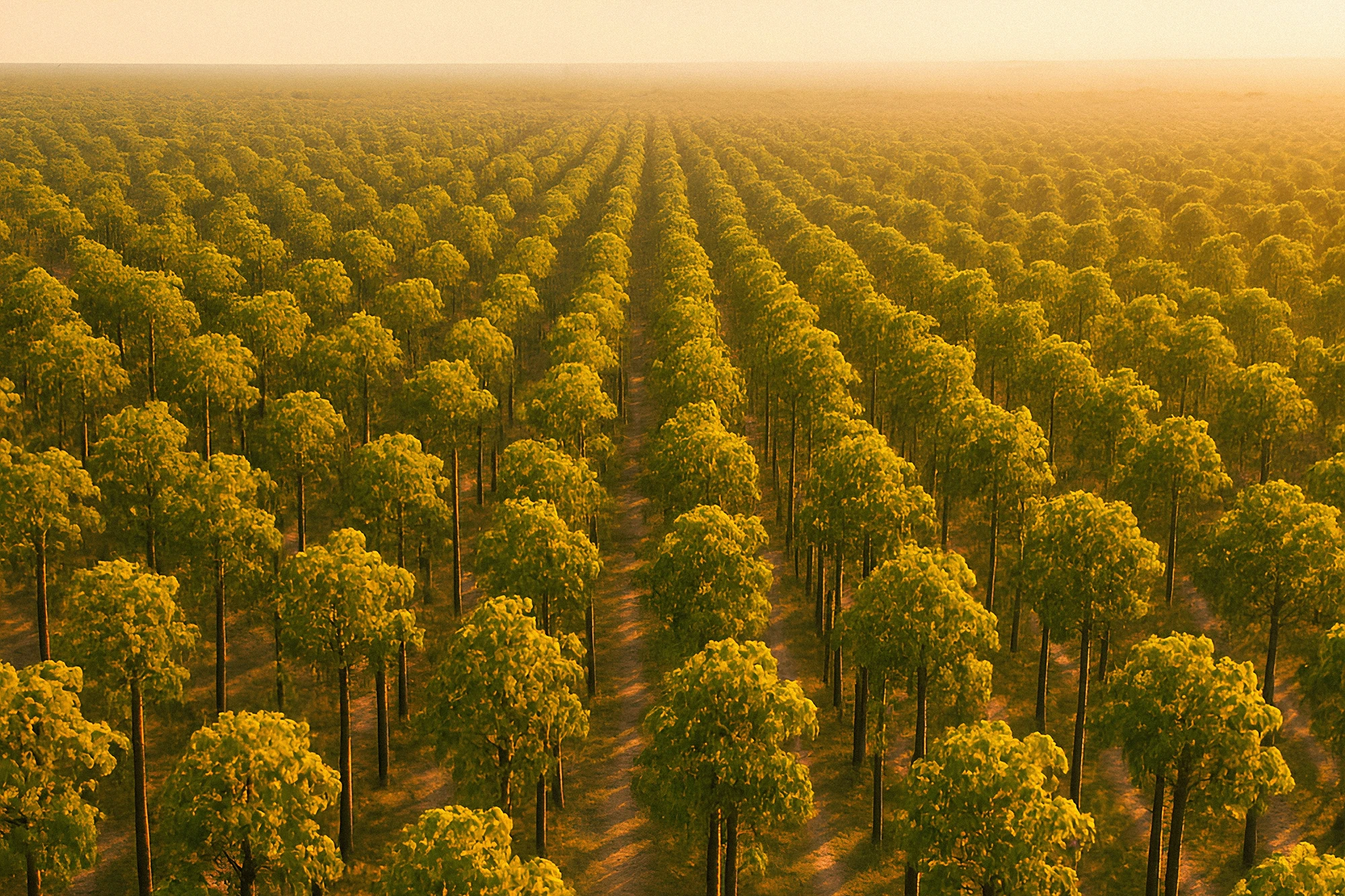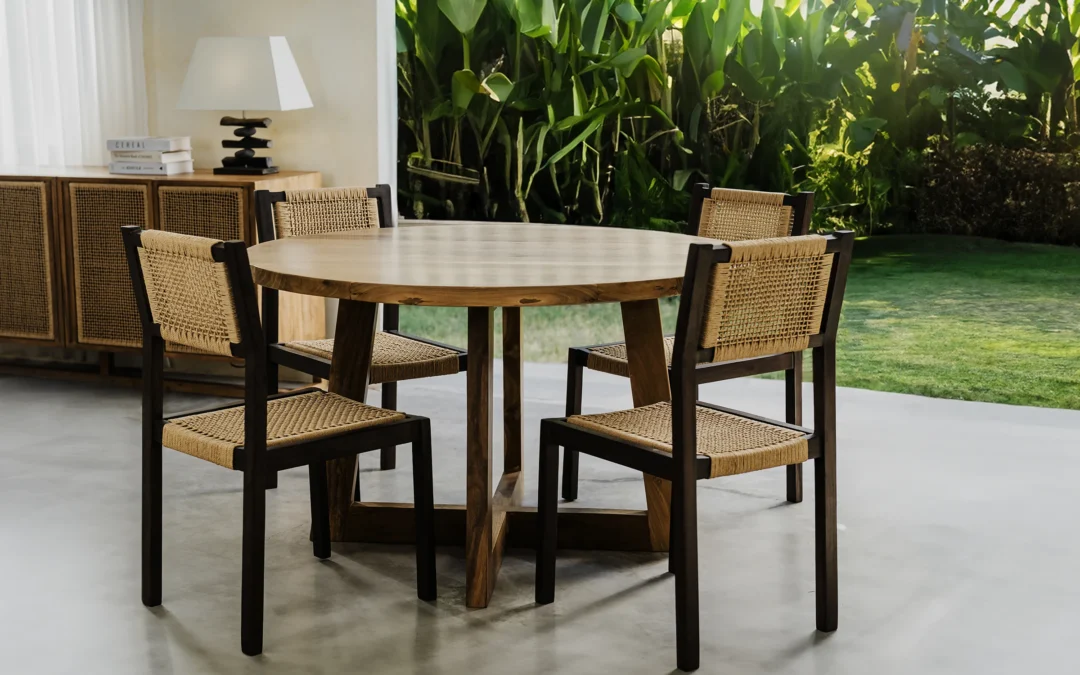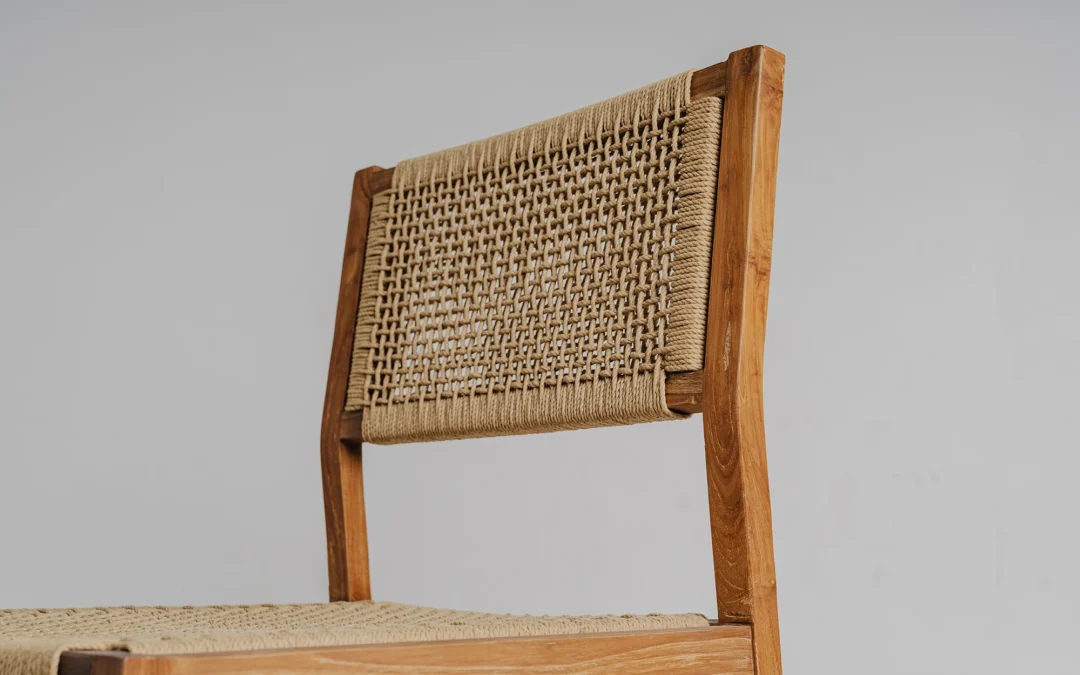We’ve all heard it before:
“Eco-friendly.”
“Sustainably sourced.”
“For every tree we cut down, we plant another.”
Sounds good on paper, doesn’t it? But the reality behind these so-called ‘sustainable’ plantation timber practices is far more complicated, meaning almost all of these claims are bullsh*t.
Here at Nusantara Lifestyle, we make all our furniture using reclaimed wood. Not because it’s trendy. But because, in our opinion, it’s the only way to build with timber without doing more damage. So let’s talk about plantation timber, why it’s not as green as you think, and what genuine sustainability actually looks like.
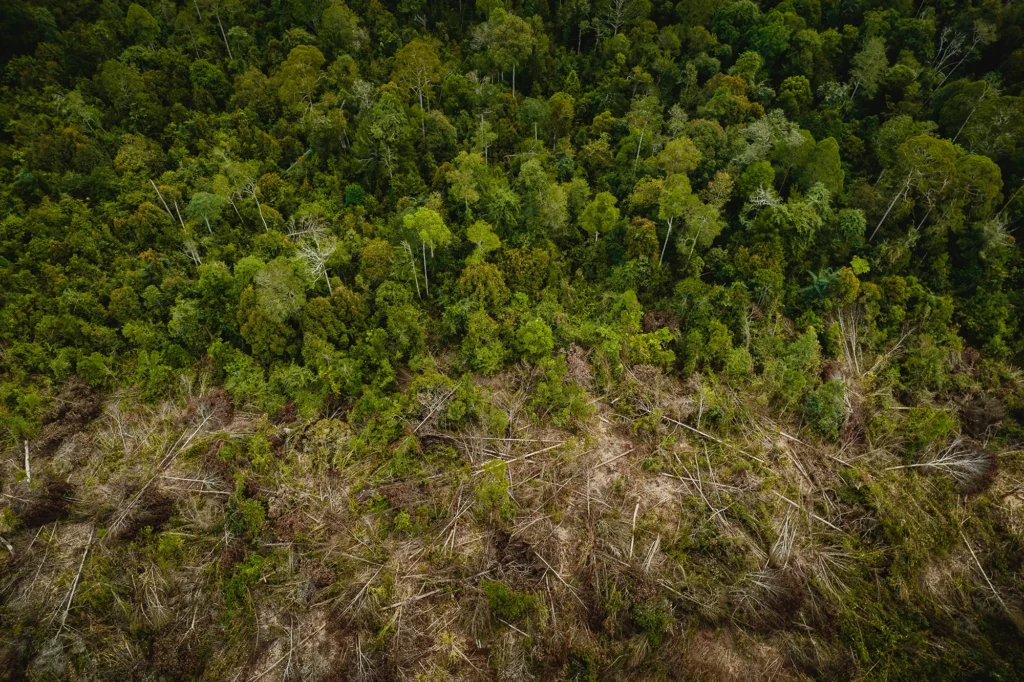
What is Plantation Timber, Really?
Plantation timber refers to trees that are grown specifically to be cut down. Fast-growing species like teak, acacia, or pine are cultivated on managed plots, then harvested, and — theoretically — replanted.
At first glance, this system feels logical. Grow, cut, replant. Repeat. That’s how sustainability works, right?
Not exactly.
To start, plantation timber almost always involves clearing vast areas of natural forest to make room for these operations. That means taking out ecosystems that have taken centuries to evolve, just to grow one type of tree in straight lines.
And once that land is converted into a plantation, it doesn’t just lose biodiversity — it loses resilience.
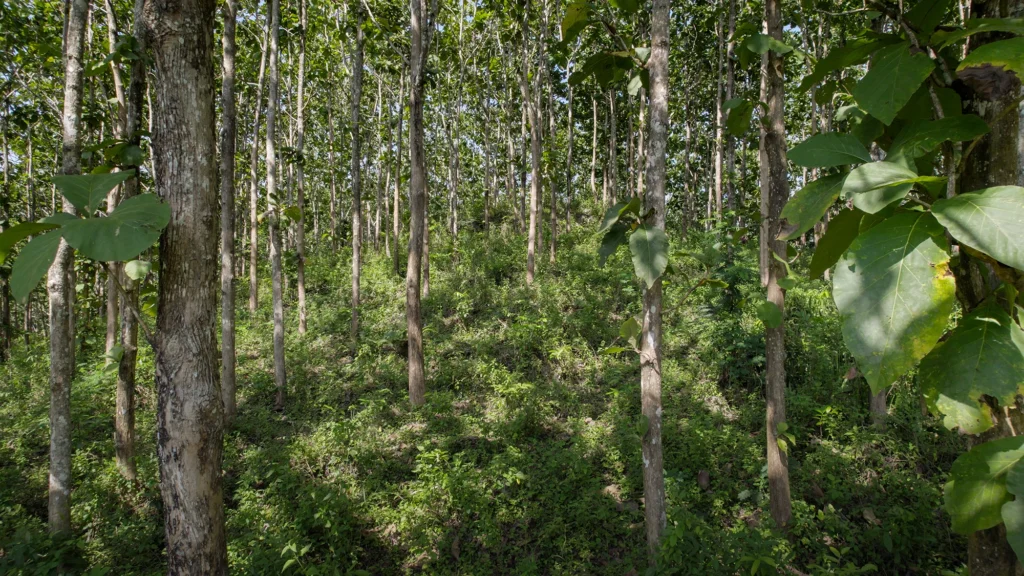
Why Monoculture Plantations Are a Big Problem
Plantation timber is nearly always a monoculture, which basically means one tree species, grown en masse.
Here’s why that’s bad:
- No diversity = fragile ecosystem. If disease or pests hit, the entire plantation is at risk.
- Dead soil. With just one species taking up nutrients, the soil gets exhausted fast.
- Heavy chemical use. Monocultures often rely on fertilisers and pesticides to survive.
- No natural regeneration. Unlike natural forests, these systems need human input constantly.
- No place for wildlife. Animals, birds, and insects lose their habitats.
In short, you end up with tree farms — not forests.
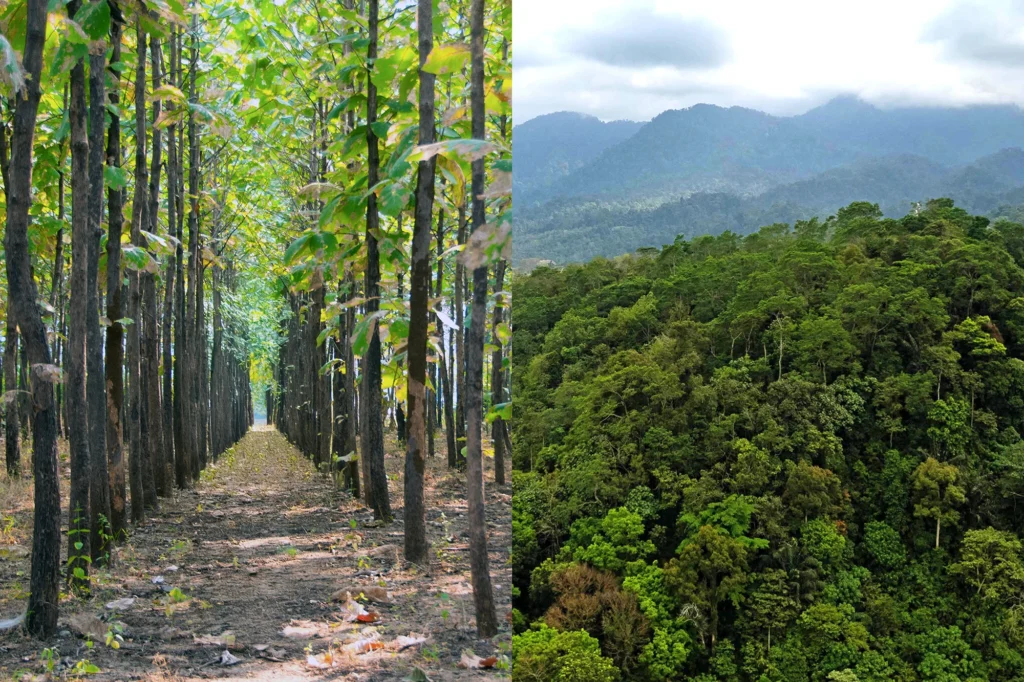
Greenwashed and Marketed as ‘Sustainable’
Here’s the real kicker: plantation timber is often certified as ‘sustainable’ by major timber certification schemes. That’s despite the fact that these plantations may have replaced biodiverse rainforest, or that they contribute to ongoing deforestation.
Let’s be honest: if you have to clear an ecosystem to grow timber, is that really sustainable?
Too many furniture companies lean on vague terms and green labels to sell the idea that plantation wood is guilt-free. But when you dig a little deeper, like we have, the environmental cost becomes much harder to ignore.
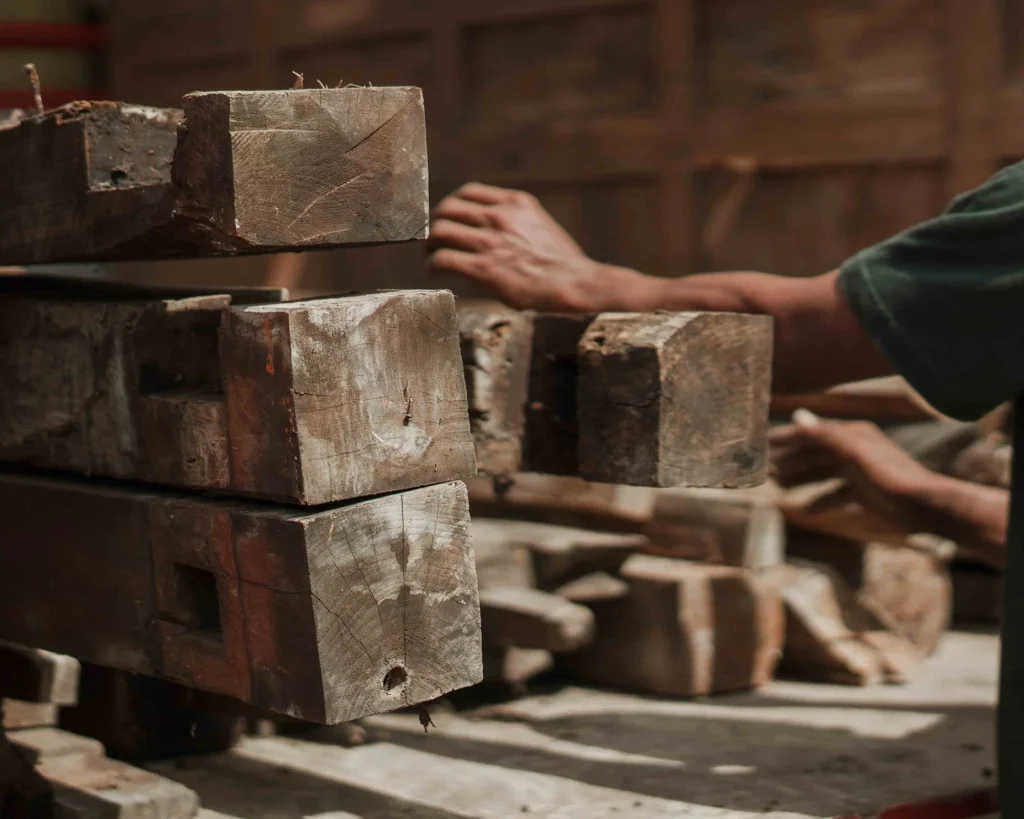
Reclaimed Wood: Real Sustainability, No Bullsh*t
This is where reclaimed timber comes in. We don’t just think it’s better — we know it’s better.
Here’s why:
- No trees cut down. We work only with timber that already exists.
- Dried naturally over decades. No need for energy-intensive kiln drying.
- Stronger and more stable. Old wood is less likely to crack, warp, or split.
- Full of character. Every piece has history, and no two are ever the same.
At Nusantara Lifestyle, most of our teak is reclaimed from traditional Javanese homes; joglo and limasan houses that are being dismantled or replaced as families modernise.
It’s a bit more work, sure. But for us, it’s the only way to make furniture that actually respects the environment it came from.
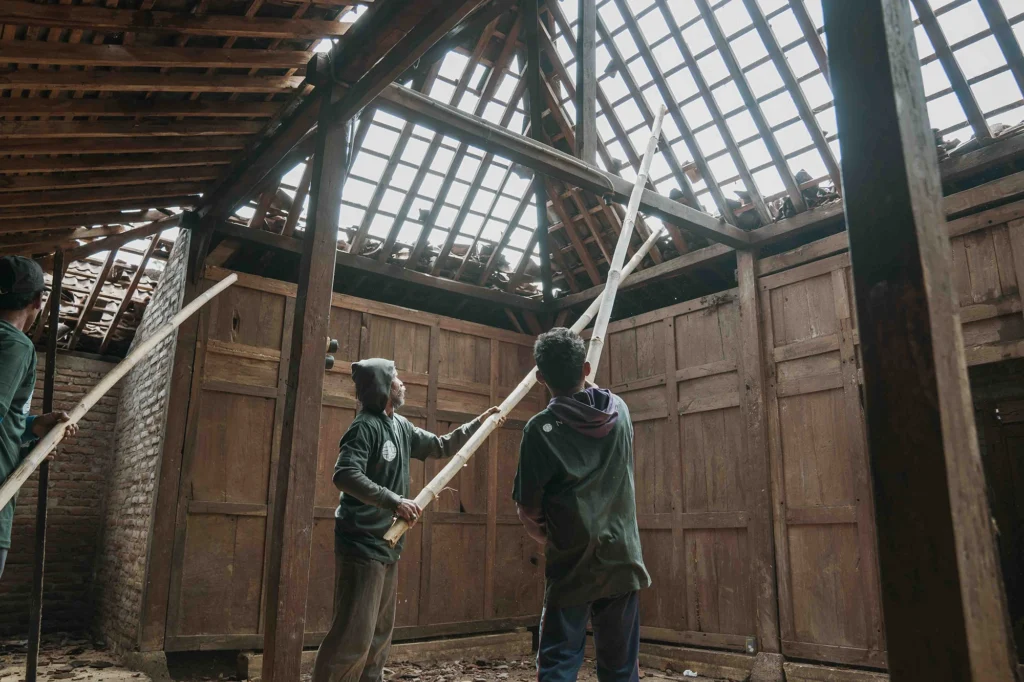
Plantation Teak vs Reclaimed Teak: Not Even a Close Call!
Let’s line it all up:
| Feature | Plantation Teak | Reclaimed Teak |
| Environmental impact | High: forest clearing, monocultures, chemicals | Low: zero trees cut, reused wood |
| Strength | Depends on drying process | Naturally dried for decades = rock solid |
| Aesthetic | Uniform grain, young wood | Rich tones, tight grain, visible history |
| Drying | Kiln dried (uses loads of energy) | Already dry from age |
| Story | Freshly planted for felling | Salvaged from old homes in Java |
| Cost | Fluctuates with market | Stable, based on grade and availability |
Why Furniture Companies Still Push Plantation Wood
We’ll be honest: plantation timber is easier to access, easier to process, and easier to market. It fits into industrial systems. It ticks boxes.
But that’s exactly the problem. Fast furniture needs fast materials, and plantations help meet that demand. Even if it means more deforestation, more biodiversity loss, more emissions, and more waste in the long run.
What we need is a shift in how we see timber: not as an infinite resource, but as something precious that already exists in old buildings, structures, and forgotten corners.
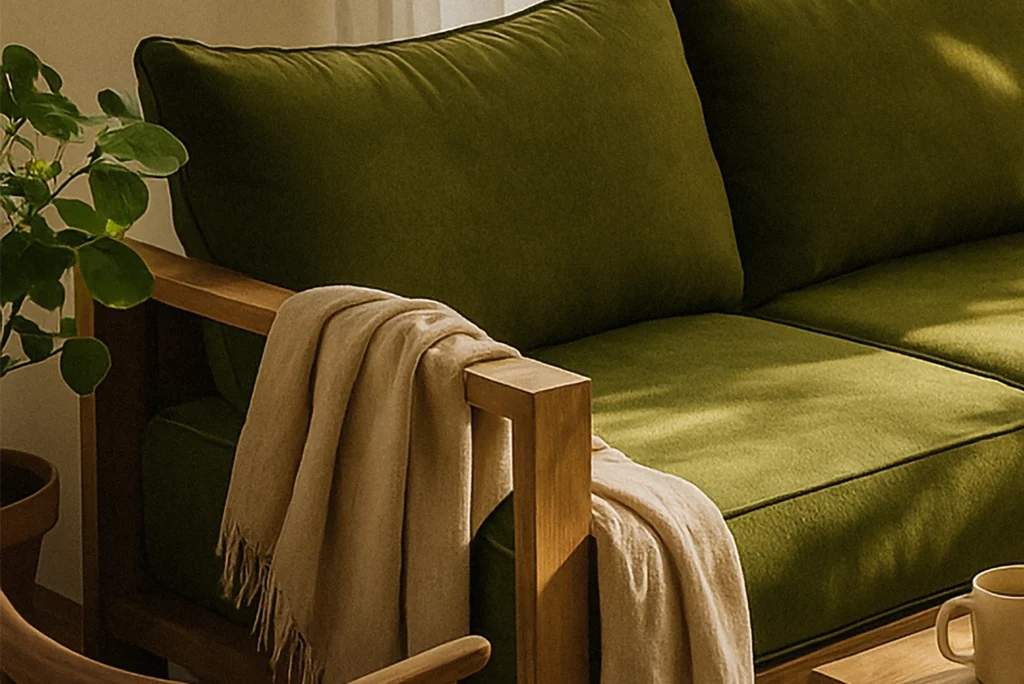
Reclaimed Furniture: Stronger, Smarter, Genuinely Sustainable
Whether it’s a custom bed frame, a polished dining table, or something a bit out of the box… we know reclaimed teak. We trust it because:
- It lasts longer
- It’s full of warmth and character
- It’s made by hand, not machines
- It tells a story, and it stands for something
If that’s not sustainability, what is?
Final Thoughts
So, next time someone tells you that their timber furniture is ‘sustainable’ because it comes from a plantation or because the company replants trees, ask a few questions:
Where was that plantation?
What forest was there before?
How long did those trees grow?
What chemicals were used?
And what happens when those trees are cut down and replaced again?
At Nusantara Lifestyle, we’re proud to say we don’t cut down a single tree for our work. We reclaim, we restore, and we build things that last.
Ready to choose timber that is genuinely sustainable and that tells a better story?
Explore our Alami collection of reclaimed teak furniture or check out our Akar range for solid wood flooring, cladding, and decking — all made from materials that already exist.
Or get in touch and let’s design something together.

